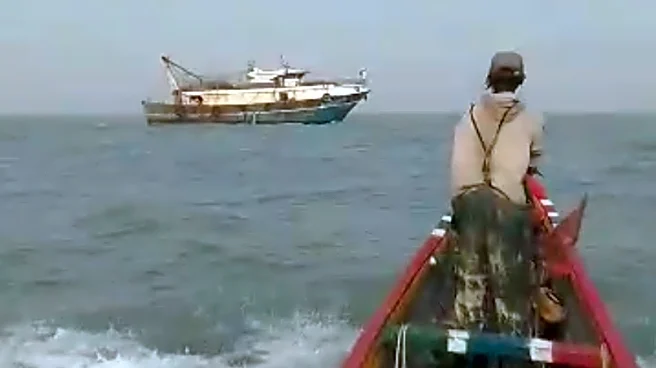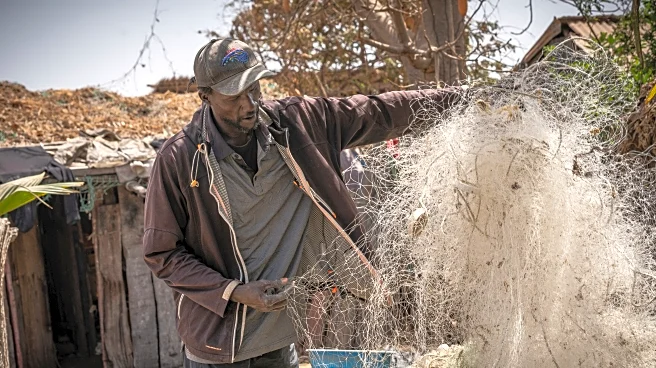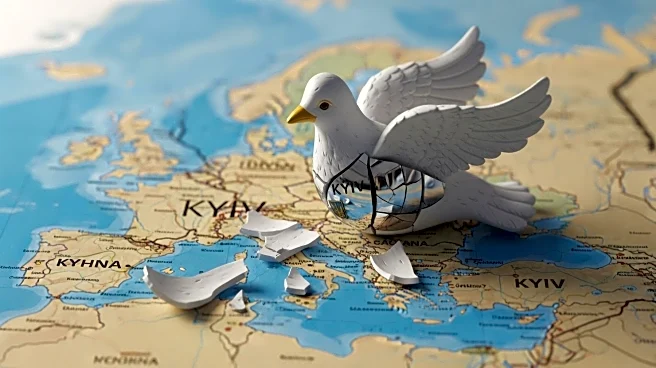What's Happening?
The Gambia Foreign Affairs Ministry has reported that at least 70 people died when a migrant boat capsized near the coast of West Africa. The vessel, believed to be from Gambia, sank off the coast of Mauritania early Wednesday morning. It was carrying approximately 150 passengers, mostly Gambians and Senegalese citizens. Mauritanian authorities have recovered 70 bodies, and witness accounts suggest that over 100 people may have perished. This incident is one of the deadliest accidents along the Atlantic migration route, which is frequently used by African migrants attempting to reach Spain via the Canary Islands.
Why It's Important?
The tragedy underscores the perilous nature of the Atlantic migration route, which has seen a significant increase in migrant deaths. According to the European Union, over 46,000 illegal migrants arrived in the Canary Islands last year, marking a record high. Rights group Caminando Fronteras reports that more than 10,000 people died attempting the journey, a 58% increase from 2023. The Gambia Foreign Affairs Ministry has urged its citizens to avoid such dangerous journeys, highlighting the ongoing humanitarian crisis and the need for international attention and intervention to address the root causes of migration.
What's Next?
The Gambia Foreign Affairs Ministry's call for citizens to refrain from dangerous migration attempts may lead to increased efforts to educate and inform potential migrants about the risks involved. Additionally, there may be diplomatic discussions between West African nations and European countries to find solutions to the migration crisis. International organizations could also step up efforts to provide aid and support to affected communities, aiming to reduce the need for such perilous journeys.
Beyond the Headlines
The incident raises ethical questions about the responsibility of governments and international bodies in protecting vulnerable populations from exploitation and danger. It also highlights the need for comprehensive immigration policies that address the socio-economic factors driving migration. Long-term solutions may involve improving economic conditions in source countries and enhancing legal migration pathways to reduce reliance on dangerous routes.














